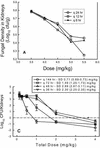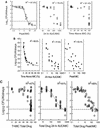In vivo pharmacodynamics of antifungal drugs in treatment of candidiasis
- PMID: 12654644
- PMCID: PMC152498
- DOI: 10.1128/AAC.47.4.1179-1186.2003
In vivo pharmacodynamics of antifungal drugs in treatment of candidiasis
Figures








References
Publication types
MeSH terms
Substances
LinkOut - more resources
Full Text Sources
Other Literature Sources
Medical

